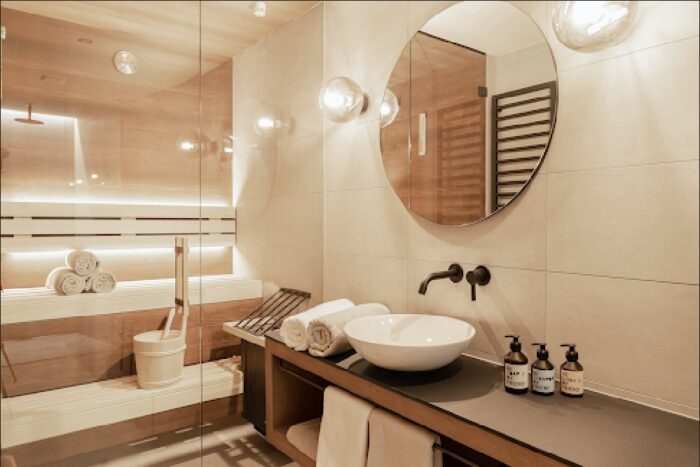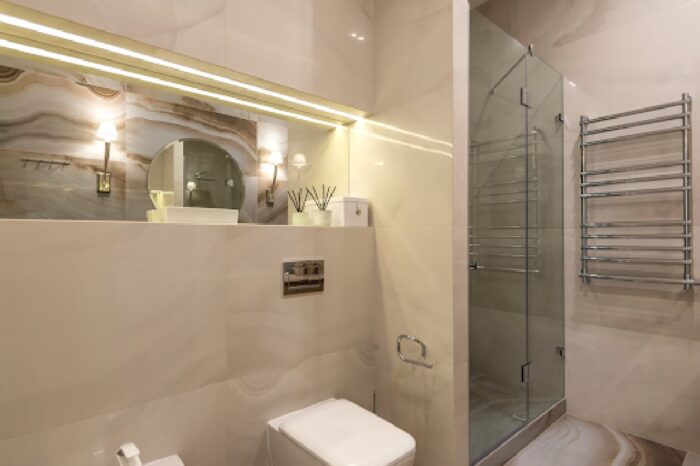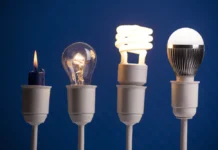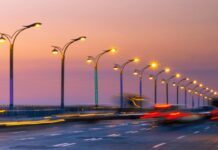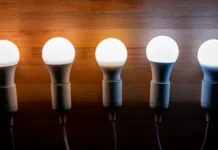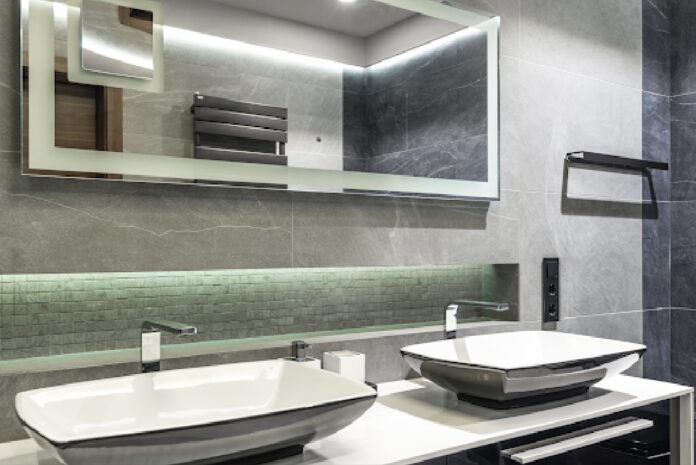
LED strip lighting is a kind of lighting widely used, especially in households and offices. However, LED strip lights also fulfill their role as lights that you can use outdoors. If you want to use such lights outside, for example in your garden pool, first you need to make them waterproof. How to do it? How to choose the best waterproof LED strip lights for your bathroom, kitchen, or sauna? We have prepared this article to give you the answers!
What should you know about LED strip lights?
LED strip lights can be used as both indoor and outdoor lighting. They are definitely the most flexible lights available on the lighting market. They are known for their versatility. They come in many variants. LED strips consist of numerous individual LED emitters that are mounted on a narrow tape. They can operate on low-voltage DC power. What’s more, you can cut your strips! A 12V LED strip can be cut every 50 mm. For comparison, a 24V LED strip can be cut every 100 mm.
It is possible to buy LED strip lights in a broad range of fixed and variable brightness (warm white, neutral white, cold white) and colors (RGB, RGBW). After buying a set of waterproof strip lights, power supplies, and an LED controller, you can be sure that they can work well in the water (you can check the IP rating on the package). LED strip lights are available in any length you want! Usually, they are available to order per meter or in kits.
Because of LED technology, there is much less wasted light with LEDs than with traditional lights. Not only that but nowadays you can easily control your waterproof LED strip lights via a remote or app. Smart lighting is a cost-effective and sustainable choice. They have lots of advantages, and they are undoubtedly worth having.
What should you know about IP ratings?
Ingress Protection Rating (International Protection Rating) shows the level of protection to which the product is protected against dust or moisture. Thanks to IP ratings, you can be sure how well the strip can stand against solids and liquids. There are two numbers that determine such a rating.
The first one tells the protection against solids (such as dust or dirt), and the second one indicates the protection against liquids. When it comes to the first number, it uses a scale from 0 to 6 – the highest number stands for no ingress of dust. The second one, in turn, uses the scale starting from 0, meaning no protection at all, and ending with 9, meaning protection against high-pressure hot water from different angles.
When do you need waterproof LED strip lights?
If you want to use LED strip lights in your bedroom or living room, there is no need for choosing a waterproof version, as the risk of water or fog in such places is almost zero. If this is your desire, you can take advantage of IP62 or even IP65 LED strip lights, keeping in mind that they can prevent dust and help you clean in the future. Nevertheless, you might as well use strips with lower IP ratings and they will be sufficient.
The situation is different in the case of LED strips that you want to use in the kitchen or bathroom. In such a case, using LED strips with the previously mentioned higher IP ratings is necessary. IP62 and IP65 are perfectly adequate in this case.
However, if you would love to use LED strip lights outdoors, in a place where they will be exposed to heavy rain, but won’t be soaked in water, the best option will be using IP 67 or IP68 LED strip lights. And finally, LEDs installed directly in the water require the highest level of protection, guaranteed by IP68 strips. Use such LED tapes in swimming pools or fish tanks.
How to waterproof your LED strip lights?
If you thought that there’s only one way to waterproof LED strip lights—you were wrong. Actually, there are a few ways to do it—you can add a silicone sleeve or silicone gel in order to achieve different waterproof levels.
For example, IP62 strip lights need a layer of silicone coating on top of the strip to prevent dust. IP65 silicon sleeve LED strip lights need to be wrapped with a heat shrink tube and then both ends need to be sealed with silicone and caps. Wrapping the IP65 strip with a hollow silicone casing is another option. Thanks to that, these LED strip lights give protection against low-pressure water jets from any direction.
Making an IP67 LED light strip waterproof is also easy. It’s a matter of wrapping the stripped bottom with a silicone sleeve that is U-shaped and, after that, adding a layer of coating on the top of the strip. When it comes to the waterproofing IP68 LED tape, you ought to wrap the strip with a hollow silicone casing and fill it with silicone to form a sealing effect. As you can see, waterproofing LED strip lights is not as difficult as it may have seemed. Nevertheless, remember that choosing existing waterproof LED strip lights in a professional shop is always a good idea!
Which materials are the best to make waterproof LED strips?
If you are wondering which materials are the best to waterproof LED strip lights, we have an answer for you. The most frequently chosen types of materials perfect for waterproofing are epoxy resin, silicone glue, and PU glue. The first one is quite cheap and is known for its low toxicity. The quality of this material is adequate for the price. Because of poor heat conductivity, the lifespan of the strip lights can be reduced.
Polyurethane Glue costs more than the previously mentioned material, which in practice means better quality. However, this material is toxic. Cured PU adhesive produces small smelly molecular compounds. As you can guess, these compounds aren’t conducive to health.
Silicone glue is definitely the best available material. The cost is the highest but such an environmentally-friendly and good-quality material is worth the price. You can rely on this product due to its low-temperature resistance, not turning yellow for a long time, and its good thermal conductivity.
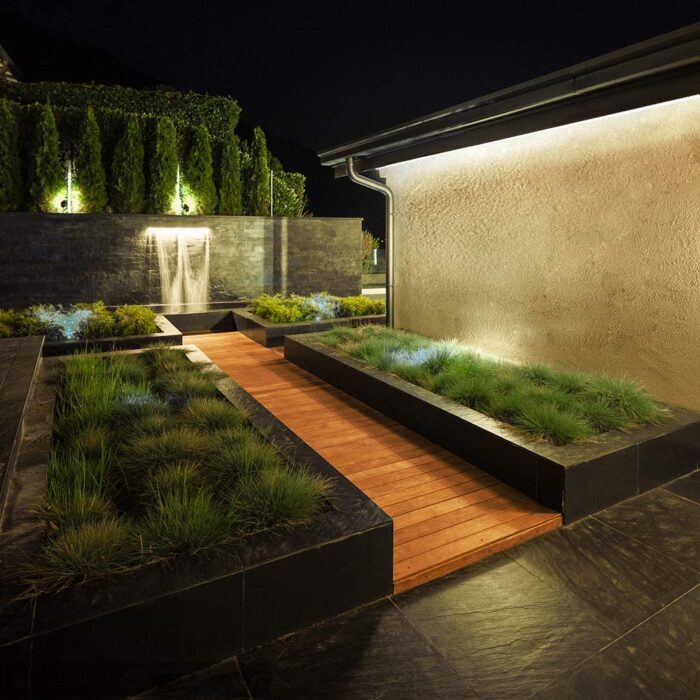
Summary
Waterproofing LED strip lights should appear easy and obvious after becoming familiar with our guide. Usually, it’s a matter of adding silicone gel or silicone sleeves, or LED strip lights. Remember that different IP ratings require different “approaches” and methods of applying the materials such as glue. Making LED strip lights waterproof is pretty easy, but if you’re still not convinced, just buy the waterproof LED strip lights that you need in a shop! There are lots of waterproof LED tapes available on the lighting market!

